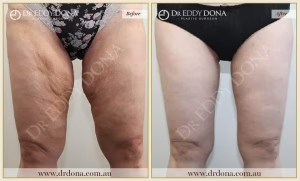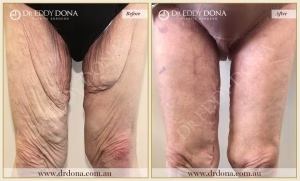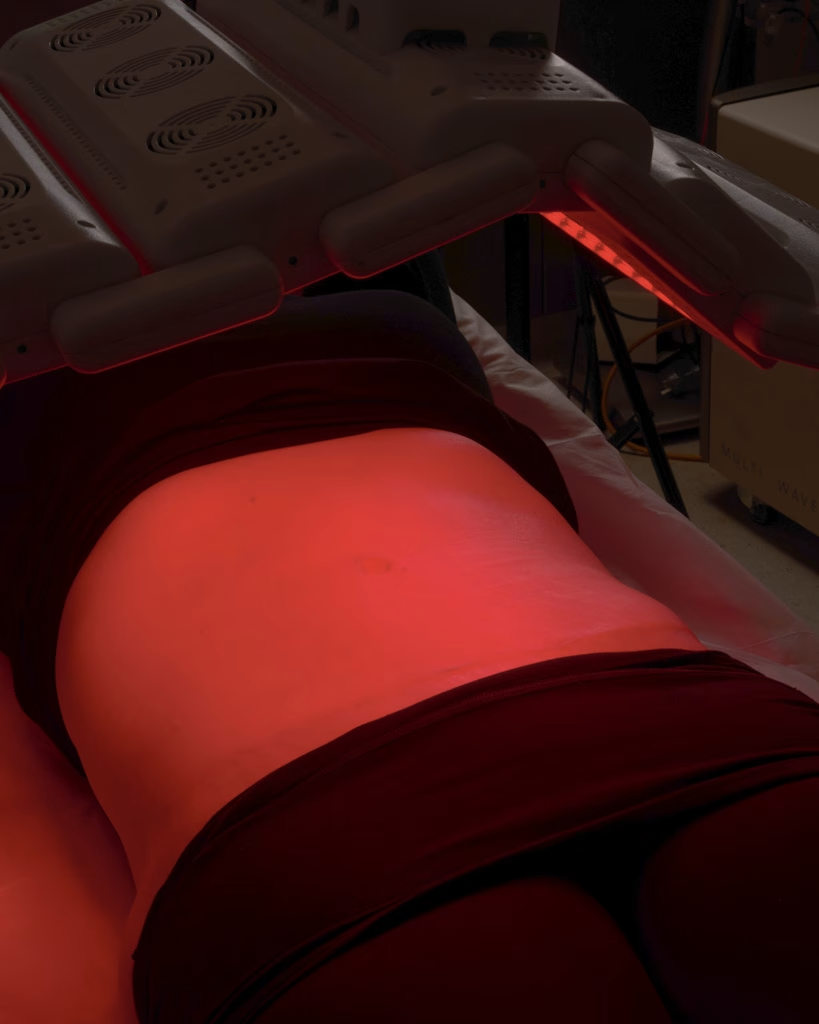Types of Thigh Lift Surgical Procedures
If you’ve lost a considerable amount of weight or have excessive loose skin that’s lost elasticity, you may be wondering which type of thigh lift is for you. The descriptions of the four types of Thigh Lifts below may help you understand these procedures a little better before your Initial Consultation.
Mini (Crescent) Thigh Lift
The Mini Thigh Lift is appropriate for patients with less pronounced excess skin and fat, primarily in the upper inner thigh. A crescent-like segment of excess skin and fat is removed from the upper inner thigh. This results in a single scar within the groin crease (and often extending to the lower buttock at the top of the back of the thighs) where the inner thigh meets the groin. The Mini Lift is ideal for individuals who are close to their ideal weight and have a more localised area of concern.
Medial Thigh Lift
If an individual has significant excess skin extending down the inner aspect of the site towards the knee, then a more extensive Thigh Lift procedure is required. A Medial Thigh Lift would typically combine a crescent-shaped scar in the groin (Mini Thigh Lift scar) with a vertical scar extending from the groin to the knee. This procedure can significantly enhance the comfort and mobility of patients who have lost a considerable amount of weight.
Outer Thigh Lift
Also known as a Lateral or Bilateral Thigh Lift, the Outer Thigh Lift aims to correct loose skin and excess fat on the outer thighs. It may also address the buttocks area. Incisions for the outer thigh lift a more extensive than those of an Inner Thigh Lift. They typically run from the groin around the hip. This surgical approach is often part of a Body Lift and is chosen by patients who have experienced significant weight loss and have excess skin hanging from the outer thighs and buttocks.
Options for Incisions with the Inner Thigh Lift
In addition to the above information, you may want to know that various options are available to address the reconstruction of your inner thighs. Dr Dona will discuss the appropriate option for you at length during your initial consultation. The two main options are:
Limited Incision Thigh Lift
This involves surgical incisions where the inner, upper thigh joins the groin. This option is only considered if there is a small amount of excess skin located near the upper inner thigh. The scar will be located along the groin crease only.
Full Thigh Lift
A Full Thigh Lift is best suited for patients who have lost a significant amount of weight and have excess skin extending down the inner thighs. During a Full Thigh Lift procedure, incisions are made along the groin crease and also extending down from the upper inner groin towards the inner knee. The length of this vertical incision varies depending on the degree of excess skin. The excess skin and fatty tissue are removed, and your skin is then tailored and enclosed using several layers of internal stitches. The result is a reconstructed inner thigh from the groin down to the knee.










